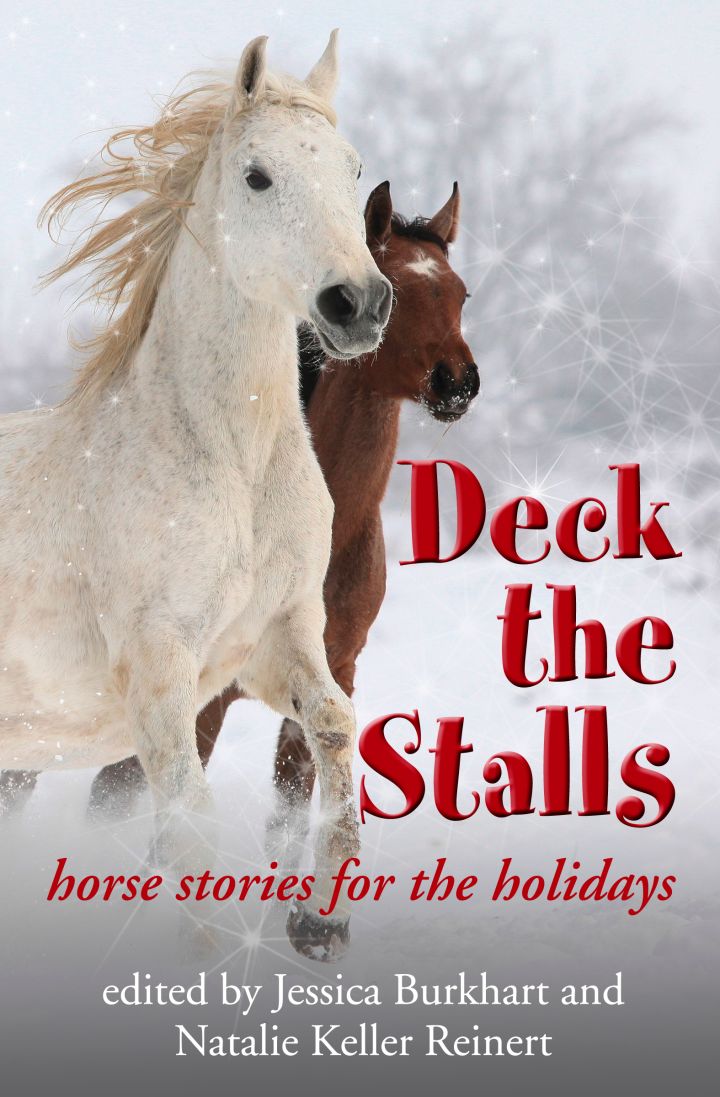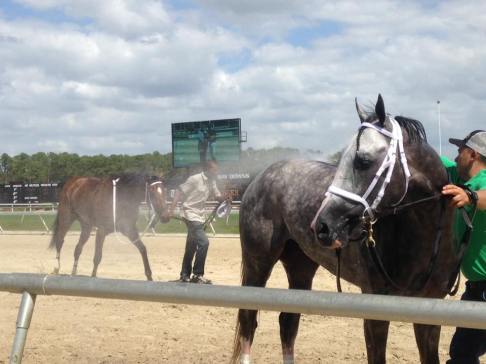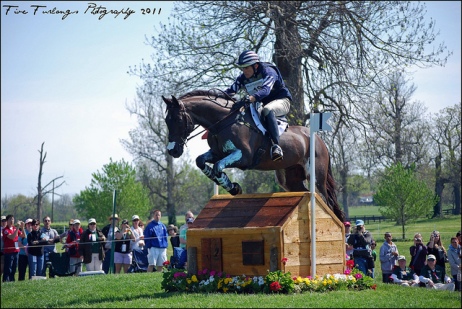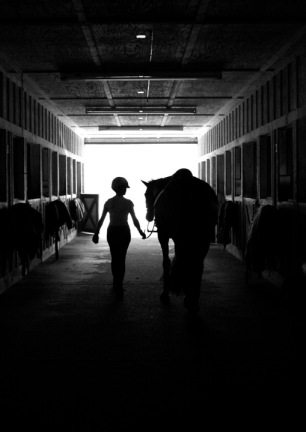Here’s a rare experience for me: reading a book so intensely personal, I was literally nodding my head “yes, yes,” along with the narrator’s internal dialogue. Here’s a rare experience for me: finishing a book, reading the teaser of the follow-up book on the next page, and immediately downloading that book so I could continue the journey I was on. Here’s a rare experience for me: the next book was completely different in every way, from voice to characters to motivation, and it still affected me as much as the first one.
 I’m talking about the work of Mary Pagones here, an equestrian writer who Gets It. She’s one of those rare breed of writers who can get inside the head of a horse-person and lay bare our hopes and dreams, our ambitions and fears.
I’m talking about the work of Mary Pagones here, an equestrian writer who Gets It. She’s one of those rare breed of writers who can get inside the head of a horse-person and lay bare our hopes and dreams, our ambitions and fears.
And she does it in a clever way, too.
Pagones starts her two-book (so far?) equestrian series with The Horse is Never Wrong, a totally non-conformist Young Adult horse story. (When I think about this book and how far we’ve come from The Saddle Club and Thoroughbred, I am just amazed and grateful for the gifts of independent publishing.) Narrator Heather isn’t impressed with her Asberger’s diagnosis — a crutch her teachers seem to love pinning her social anxieties and occasional academic blunders upon, but which might not actually exist, since Asberger’s has been folded into the Autism spectrum. All Heather knows is, everyone else is weird, and she is just doing her own thing. What’s wrong with that?
Heather discovers riding and riding is good for her… but it isn’t a Cinderella Goes To The Olympics story. Heather as a character is beautifully written — she narrates without self-pity, without (intentional) humor — she’s a just-the-facts-ma’am reporter. Her voice is unerringly true to herself. Not particularly flowery, even stilted at times, and always pretty sure something is going to go wrong. Here, Heather sums up her biggest challenge in life: dealing with herself.
“I’m just going to have suck and up and deal with the me I have been given, just like I have learned not to complain about a horse’s behavior. Change your behavior; it’s not the horse’s fault, I’m told.”
I got Heather. I totally understood Heather. I felt an almost alarming connection to Heather — she took me back to ninth grade (which was not a place I particularly wanted to go, but… I did some good riding that year, and I met some cool people at the barn to make up for the people I didn’t even remotely understand at my high school).
And that’s what makes Fortune’s Fool so interesting.
 Simon, who makes his first appearance in The Horse is Never Wrong, couldn’t be more different from Heather. It’s several years in the future and Simon has gone from the local barn’s resident bronc-buster, that teenager who will get on anything, to a high school senior about to embark on his life’s dream. He’s going to be a working student at an eventing barn (clearly inspired by Tamarack Hill) and take life by the horns. He’s going to make a living as an eventer. He’s going to ride horses forever and ever and no one can stop him.
Simon, who makes his first appearance in The Horse is Never Wrong, couldn’t be more different from Heather. It’s several years in the future and Simon has gone from the local barn’s resident bronc-buster, that teenager who will get on anything, to a high school senior about to embark on his life’s dream. He’s going to be a working student at an eventing barn (clearly inspired by Tamarack Hill) and take life by the horns. He’s going to make a living as an eventer. He’s going to ride horses forever and ever and no one can stop him.
Simon is brash, arrogant, proud, hot-tempered, know-it-all… and yet he’s totally lovable. He listens to 80s punk and New Wave, worships The Killers, and is dying for a pair of Doc Martens if only they didn’t cost as much as a new pair of paddock boots. No one can tell Simon a damn thing… Simon knows best, thank you very much, especially about his riding, especially especially about his hell-for-leather cross-country style and his possibly-psychotic horse, Fortune.
Oh boy, did I get Simon.
If Heather took me back to my awkward “only my horse understands me” freshman year, Simon took me back to my post-high-school “I’ll sleep/earn money when I’m dead” years. (I’m still kind of in those years, except I give in to sleep way more often. I still don’t really earn any money, though. I write horse books.) But seriously… I listened to 80s punk and New Wave. I wanted a pair of Doc Martens but couldn’t justify the cost. I knew that my parents and my teachers and life and everyone were wrong — there was no need to waste time on so-called intellectual pursuits, not when I could ride a horse, take care of a horse, clean up after a barn full of horses…
As truthful to writing from Simon’s perspective as she was from Heather’s, Pagones does a total 180 shift in her writing. Simon’s sentences are jagged, his observations are hyperbolic, his language is very, very salty. Simon cusses like a sailor, but what 18-year-old working student doesn’t? I used to boast that I only spoke English but thanks to fellow working students and foreign grooms, I could swear in five languages. (I don’t remember them anymore.) Simon thinks in bursts of emotion and long moments of introspection; what some people see as editing misses are more likely the workings of his mind. No one thinks in perfect sentences.
The aching truth behind Simon’s rough swagger is that he doesn’t know what’s going to happen and that’s scary as hell. He doesn’t have money, just talent. And he’s just as plagued by thirty under thirty lists as I’ve always been — of course, now my pet peeve are forty under forty lists. Could people stop being so accomplished, please? Here’s Simon, telling it like it is:
The sense of motionlessness is particularly strong when I read about about someone my age winning an international event. This seems to confirm everyone’s opinion that I’m making some sort of horrible mistake with my life.
He’s eighteen, he’s in a state somewhere between elation and panic about the future, and he’s in very deep waters, not just professionally, but romantically.
Been there.
What it all comes down to: The Horse is Never Wrong and Fortune’s Fool are not your average horse books. I’ve never read two books by the same author that were written so differently, and yet so genuinely. I’ve never identified with two characters so completely opposite in every way. These books are challenging in structure and story, completely honest to the equestrian life, and by turns both soft and gritty. Non-traditional and utterly readable, these are wonderful new entries into the growing equestrian fiction niche.
Click to find The Horse is Never Wrong and Fortune’s Fool at Amazon in Kindle ebook and paperback.
(originally published at NatalieKReinert.com)




 Let’s talk about horse books.
Let’s talk about horse books. 

 I’m talking about the work of Mary Pagones here, an equestrian writer who Gets It. She’s one of those rare breed of writers who can get inside the head of a horse-person and lay bare our hopes and dreams, our ambitions and fears.
I’m talking about the work of Mary Pagones here, an equestrian writer who Gets It. She’s one of those rare breed of writers who can get inside the head of a horse-person and lay bare our hopes and dreams, our ambitions and fears. Simon, who makes his first appearance in The Horse is Never Wrong, couldn’t be more different from Heather. It’s several years in the future and Simon has gone from the local barn’s resident bronc-buster, that teenager who will get on anything, to a high school senior about to embark on his life’s dream. He’s going to be a working student at an eventing barn (clearly inspired by Tamarack Hill) and take life by the horns. He’s going to make a living as an eventer. He’s going to ride horses forever and ever and no one can stop him.
Simon, who makes his first appearance in The Horse is Never Wrong, couldn’t be more different from Heather. It’s several years in the future and Simon has gone from the local barn’s resident bronc-buster, that teenager who will get on anything, to a high school senior about to embark on his life’s dream. He’s going to be a working student at an eventing barn (clearly inspired by Tamarack Hill) and take life by the horns. He’s going to make a living as an eventer. He’s going to ride horses forever and ever and no one can stop him.


